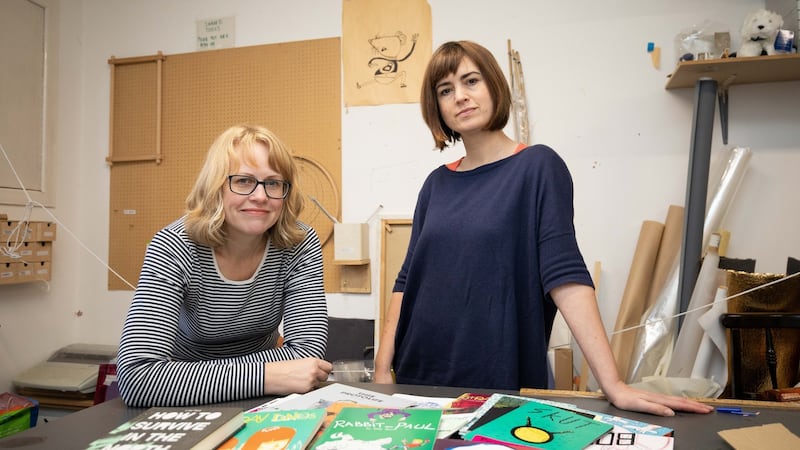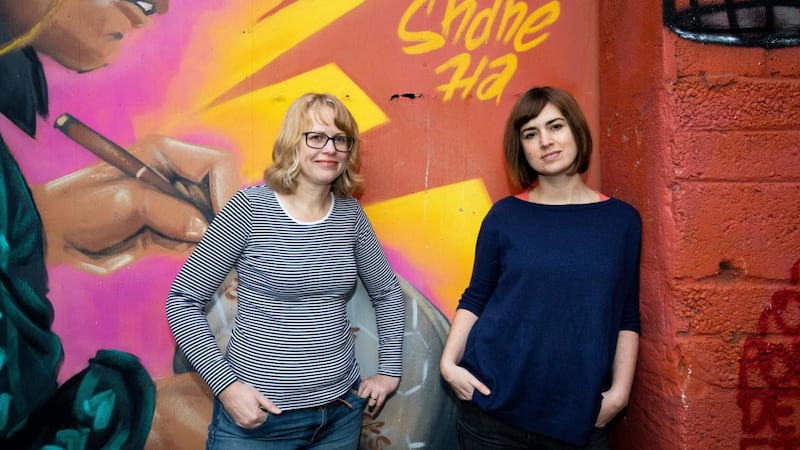It's a good time for comics in Ireland. An independent small-press comics scene is blossoming, while in parallel, high-profile Irish artists such as Will Sliney and Declan Shalvey are working for big US publishers. In other Anglophone countries, the form is edging its way into the mainstream with Nick Drnaso's graphic novel, Sabrina, shortlisted for the 2018 Booker Prize.
So this year The Irish Times is partnering with the Comics Lab to present Ireland's first Graphic Short Story competition. The winners and runners up will be assessed by the judges: writers Kevin Barry and Lisa McInerney, and comic creator and illustrator Dan Berry. In April the winning entry will be announced at the Dublin Comics Arts Festival (DCAF) and published in Ticket and an anthology of the shortlisted works will also be released at DCAF.
The Comics Lab fosters the creation of small-press indie comics. The women behind it are Dublin-based artists Debbie Jenkinson (creator of, among other things, the award-winning graphic novel Remorse) and Sarah Bowie, (creator of, among other things, Seen and Heard in Dublin).
I meet them both in Jenkinson’s studio at the A4 Sounds co-working arts space near Dorset Street, where they have an array of small-press publications laid out to demonstrate the breadth of comic-creation talent currently operating in the country. They encourage me to fill my bags with samples. “It saves us having to carry them,” says Bowie.
“At the moment, Ireland is really flourishing culturally, our literature scene, our theatrical scene, animation is really regarded,” says Bowie. “But for some reason there feels like there’s a blind spot in Irish culture with regard to comics. They’re very much pigeon-holed and stereotyped. Either they’re seen as genre comics, Sci Fi, fantasy, 2000AD, that sort of thing, or as something for kids.”

Bowie and Jenkinson are looking towards other traditions, like the underground comics scene of the US and, even more pertinently, Europe, where comics for adults have long been a hugely diverse and popular phenomenon. At the French comic festivals she attends, says Bowie, “you get everyone from grandmothers to four year olds”.
Her own entry into comics was via the British children's comics of the 1980s. "The Beano, the Dandy, the Judy, the Bunty… We would buy all those comics and would read them all and I was constantly making little comics."
What sort of things was she writing about? “Fart jokes and walking on poo,” she says and laughs. In her teens she fell away from the medium and it was only when she first saw Manga comics in her 20s that she began to become invested in the form again. “That was my gateway back in.”
Debbie had little interest in comics in her youth, but in the 1990s, while studying animation in Ballyfermot, she picked up Art Spiegelman's holocaust memoir Maus. "I thought 'This is amazing. You can tell this kind of story?' Seeing a very serious story of such magnitude, that's what really switched me on."
'We wanted to mix it up and make it more exciting, so people who wouldn't consider themselves comic fans or makers would think this is a medium for storytelling'
In the mid-2000s, however, with a few exceptions (Bowie mentions the beautifully weird comics of Bob Byrne) most independent comics being made in Ireland were in the Sci Fi and superhero space. There were some local comic conventions, says Bowie, “but it was really genre. The guys I met were lovely but it was also very male dominated, and I couldn’t see where my work could fit.”
She started visiting smaller conventions in the UK where a real indie scene was developing, fostered by publishers such as Nobrow. “You saw a mixture of types of illustration and different kinds of comics, avant-garde kinds of comics.”
The Irish small-press comic scene really began, says Jenkinson, with the Dublin Comic Jam, where creators Phil Barrett, Paddy Lynch and others would gather people to draw together. "They really started something that was really modest and informal and fun," says Jenkinson. "Otherwise we were all scribbling in our sheds."
The Dublin Comic Jam was where Jenkinson and Bowie first met. "Debbie was in the process of doing this colossal bit of work," says Bowie pointing at a graphic novel on the table. "It's called Remorse and she's too modest to say that it won an award. I was blown away."

The next important step for Irish indie publishing, says Bowie, was the Dublin Zine Fair, run by Sarah Bracken annually since 2011. “She can’t be given enough credit,” she says. “That got people into small-press publication who didn’t give a shit about capes and tights… It was really open and really multicultural and people were experimenting with lots of things.”
Jenkinson and Bowie decided they wanted a space where they could talk about their processes with other artists and so started running the Comics Lab. “A kind of Ted talky thing where people could come in and show their work and talk about it,” says Bowie.
They collected voluntary donations from attendees at the Comics Lab and released anthologies of work. They also became involved with the Stray Lines collective who also produced high-quality anthologies curated by Paddy Lynch.
Meanwhile another comics creator, Matthew Melis, began running DCAF, where small-press comic-book artists could gather and sell their comics and prints, and take part in discussions and workshops.
“We just wanted to mix it up and make it more exciting,” says Bowie. “Make it so the people who wouldn’t consider themselves comic fans or makers would think this is a medium for storytelling.”
A lot of the work isn't 'comic' in tone. It veers towards realism, memoir, slice-of-life observation and first-person story-telling
They've started bringing the new generation of comic creators to a wider literary audience. They've pioneered a way of doing live readings of comic books with projections and have been invited to do so at literary festivals. Bowie thinks that literary types no longer see comics as "lowbrow". This has been helped a lot, she thinks, by the books such as Sabrina by Nick Drasno being shortlisted for the Booker Prize. Sometimes she feels the word "comic" turns people off. "But if you say 'graphic storytelling' they say 'What? Is it x-rated or explicit?' and if you say 'sequential storytelling', you get slagged off."
They both laugh. “We need a new word don’t we?” says Jenkinson.
They have a point. A lot of the work displayed on Jenkinson’s work table isn’t exactly “comic” in tone (though some is). It veers towards realism, memoir, slice-of-life observation and first-person story-telling, and away from the heightened fantasy realm of superhero comics.
“A lot of these creators have this very Irish voice,” says Jenkinson. “It’s nice we have this virgin territory to explore ourselves and make our own thing happen. If we were writing novels we’d be terrified because that tradition is so weighty in Ireland. But this is great. We can make it our own thing.”
The judges would still accept a good superhero story, right? They laugh. “Yes,” says Bowie. “It’s just about broadening the spectrum.”
'There's something really immersive about reading a comic. It's like looking at the world through someone else's eyes'
Bowie and Jenkinson are aware of many Irish comic creators crying out for a competition like this one (“To raise the bar,” says Bowie), but they’re also hopeful that it will inspire talented illustrators and writers who might never have thought to tell stories in this form. “So when they see the competition they think, ‘I want to throw myself into that space. I want to do something for that,’” says Bowie.
What can comics do that other forms cannot? Bowie shows me the notebooks in which she draws ink and watercolour Seen and Heard in Dublin comics, often based on her commute to work. She talks about the physicality of comic-book art and of drawing in general – the fact that these are literally the marks a creator made on a page. "I remember going to see Leonardo da Vinci's sketches and the energy of feeling… hundreds of years later [that] at that moment, his pen created that tail tip on that cat."
“I think there’s this magic triangulation that happens between the reader, the image and the text,” says Jenkinson. “I think our brains take in pictorial information in a different way… a more natural way. There’s something really immersive about reading a comic, that’s different from reading prose... It’s like looking at the world through someone else’s eyes.”
The Comics Lab, in partnership with The Irish Times, is launching Ireland's first Graphic Short Story Prize. Ten entries will be shortlisted by a panel of judges to be printed in an anthology, while the winner will be published in print in Ticket, and the runner-up on irishtimes.com. The entry deadline is Friday, March 8th. For full information see thecomicslab.ie




















